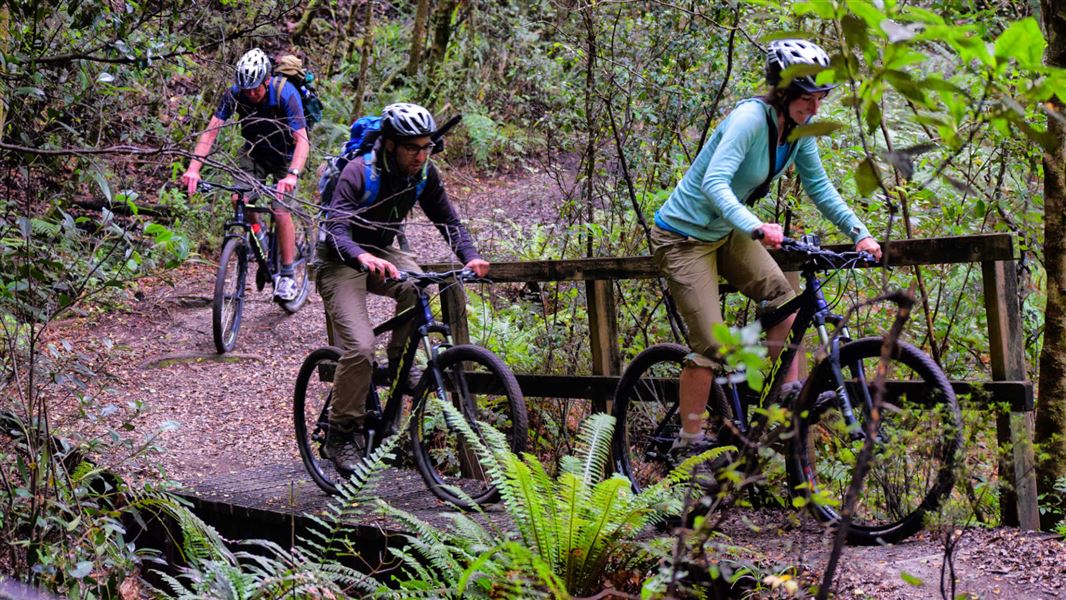Vehicle access
Vehicle access is available to the park from the north and west from a number of roads, mainly unsealed and on both private and DOC land.
Airstrips
A number of airstrips provide access to the forest park by light aircraft. Note: A permit is required to land on public conservation lands. Find out how to provide aircraft activities
Boyd Airstrip Ngaruroro River:
This airstrip is administered by the DOC and is available for transport of recreational users.
To use the Boyd Airstrip we strongly recommend that you consider the following:
- runway length is 550 m
- there is no significant slope
- the strip has an uneven surface and will retain surface water as puddles for up to three days after periods of significant rainfall
- the strip's elevation (3100 ft) means that density altitude combined with all up weight is often an issue for take off
- the Boyd is notorious for wind shear, turbulence and gusts on short final approach and on take off.
Given all the factors pilots should contact an experienced operator, such as Taupō Air Services +64 7 378 5325 or Air Charter +64 7 378 5467, to seek advice on current conditions likely to be encountered, prior to departure.
Use radio frequency 134.0 in the Boyd Airstrip area.
Oamaru Airstrip: This airstrip is located on private land across the river from Oamaru Hut. Helisika +64 7 384 2816 has permission to take recreational users to this strip.
North Arm Te Wai O Tupuritia Stream: Located on private land where Helisika +64 7 384 2816 has permission to operate.
Helicopter access
Helicopters are only permitted to land at established DOC hut sites and other designated landing sites.
Access through private land
It is essential that visitors seeking access through adjacent private land gain permission from the landowner before departure. Hunting permits from DOC confer no right of access across private land.
Private land adjoining the Kaimanawa Forest Park
The lower Oamaru Valley - south east bank; the upper Ngaruroro River including the Mangamingi and Te Wai O Tupuritia Streams, the headwaters of the Rangitikei and Tauranga-Taupō Rivers. East Taupō Lands block, private land. No access. Enquiries to Helisika +64 7 384 2816.
There is no public access to the following routes through the East Taupō lands block. Requirements for access contact: Helisika +64 7 384 2816.
- Kiko Road to Ngapuketurua to Cascade Hut
- Cascade Hut to North Arm to Boyd Hut
- Waipakihi Hut to Ignimbrite Saddle to Ngapuketurua
The large tract of land south of the Mangamingi Stream between the Ngaruroro and Mangamaire Rivers. Contact Helisika +64 7 384 2816.
The southern bank of the Waipakihi River below the Waipakihi Gorge to Waikato Stream and extending south into the 'Needles Block'. Contact Kaimanawa 3B2A and 3B2B Trust, c/o He Akina Ltd, phone +64 7 378 5180 or email admin@heakina.co.nz.
The Rangipo Blocks north of Waikato Stream and east of the Desert Road. Contact Tuwharetoa Maori Trust Board +64 7 386 8832.
South of the Rangitikei River and Makahikatoa confluence on the true left bank. Contact Ngamatea Station +64 6 388 0883.
Ensure you are prepared for trips in Kaimanawa Forest Park. Find out about weather, maps, communication, fire and water in Kaimanawa Forest Park.
Dog access
Dogs are permitted with a DOC permit only. Contact the relevant DOC office to obtain a permit.
Avian avoidance training for dogs is not required for Kaimanawa Forest Park but encouraged to protect kiwi and whio.
Learn more about Avian avoidance training and contact a trainer.
Dominated by the Kaimanawa mountain ranges, the park encompasses a vast largely unmodified expanse of native forest, shrublands and tussock grasslands. It was gazetted in 1969 and is managed to protect and conserve soil and water, native vegetation, wildlife and scenic values.
Vegetation
Beech forest covers most of the park. Red and silver beech are dominant in the north and east, with mountain beech in the south and interior valleys. Towards the west podocarp forest (rimu, matai, totara) becomes more frequent. Between 1160 and 1370 m the forest gives way to tussock grassland and subalpine vegetation.
Birdlife and a carnivorous snail!
The most common native birds in the park are the pigeon, fantail, bellbird, rifleman, robin, grey warbler, tomtit, whitehead and kakariki. In lesser numbers are blue ducks, New Zealand falcon, pipit, tui, morepork, fernbird, kaka, black and pied shags. In summer the shining and long-tailed cuckoos are common. The kiwi is now rarely seen or heard in the park but you may still hear its night calls or see signs such as probings or footprints.
The Kaimanawa Forest Park is also home to Powelliphanta marchanti, one of New Zealand's giant land snails. In parts of New Zealand Powelliphanta can reach up to 90mm across, or the size of a man’s fist. Their oversize shells come in an array of colours and patterns, ranging from hues of red and brown to yellow and black. They are also carnivores particularly liking to eat earthworms, sucking them up through their mouth just like we eat spaghetti!
All birdlife and vegetation in the forest park is protected. Please remember that dogs are a real threat to many bird species particularly kiwi and blue duck.
Physical features
The catchments of four major rivers lie within the park - the Mohaka, Rangitikei, Ngaruroro and Tongariro - as well as several smaller rivers.
The park interior around the main range is of rough and broken topography: it is less rugged toward the east, with a more gentle terrain around the park perimeter.
Check, Clean, Dry
Clean all gear when moving between waterways to prevent the spread of didymo and other freshwater pests.
DOC Customer Service Centre
| Phone: | 0800 275 362 |
| Email: | turangi@doc.govt.nz |
| Address: | Tūrangi Office |
